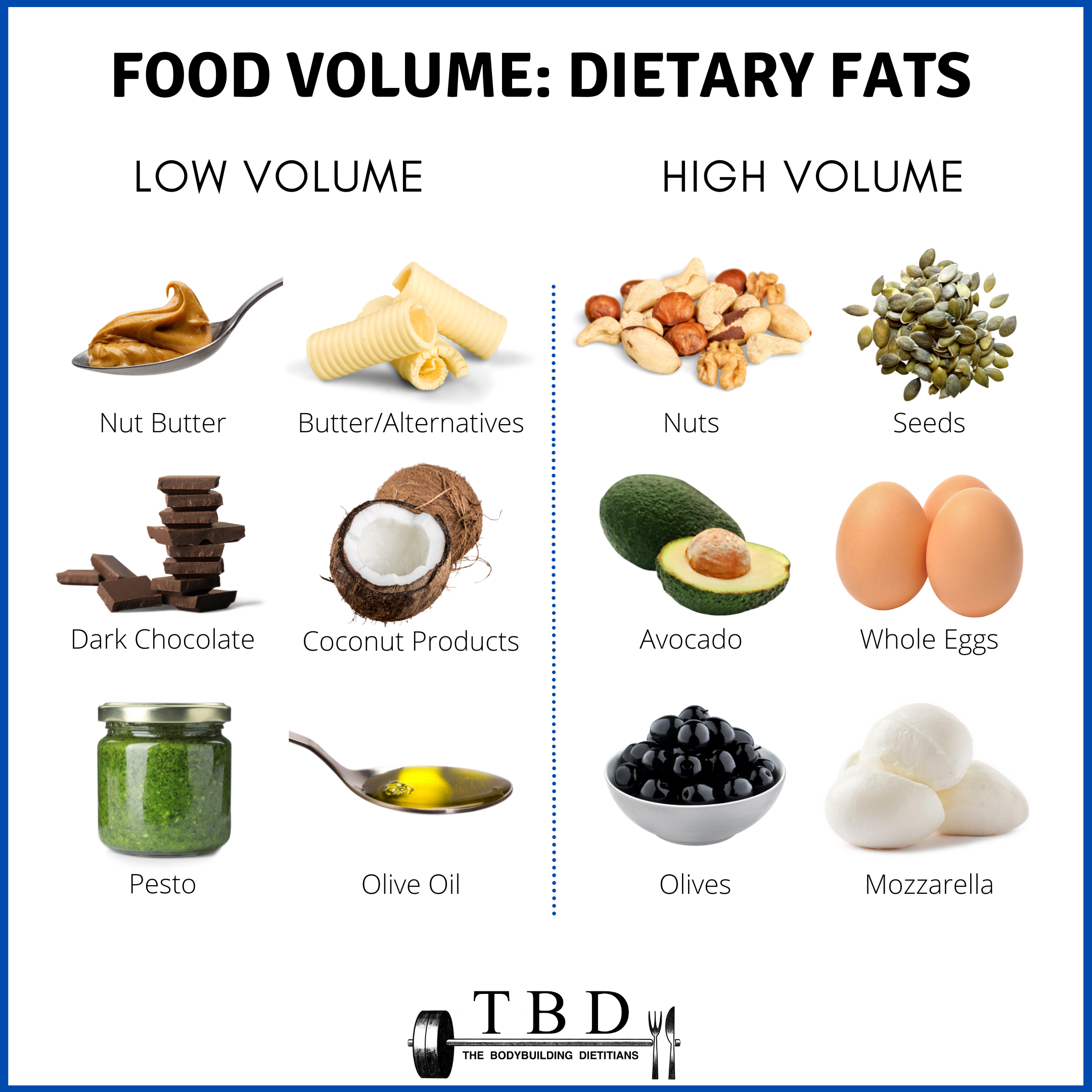The interesting thing about dietary fat is that since it’s twice as calorically dense as carbs and protein (9 cal/g vs 4 cal/g), all fat-predominate food sources are usually considered “low volume”. However, when comparing fat sources with other fat sources, rather than fat sources with carbohydrate or protein sources, this infographic illustrates that some dietary fat choices may be more or less volumous than others.
For example, consuming 20g of whole nuts (which would be equivalent to ~20 almonds) would appear to be more volumous and take longer to eat than 20g of almond butter. Similarly, avocado or mozzarella on toast has the potential to be more volumous than butter. On the other hand, drizzling olive oil or pesto onto your pasta rather than adding whole olives would appear to be less volumous, same as snacking on dark chocolate compared to boiled eggs.
Depending on your body composition goals and if you choose to be in a dietary surplus, at maintenance, or in a deficit, then psychologically feeling as though you are eating more or less can make a big difference to your long-term success! Therefore, it’s worthwhile being strategic with your food sources and matching these to your appetite levels!
Also, just as a disclaimer, we’re not saying that you should exclusively choose your dietary fat choices from the “high volume” column if you’re dieting, and “low volume” column if you aren’t dieting. Diversity is key, therefore we recommend that you consume a wide variety of dietary fat sources regardless of their “volume” to ensure you obtain a balance of monosaturated, polyunsaturated, and saturated sources, and the micronutrients that come with each unique food. This post is simply for information purposes and potential ideas for choosing dietary fat sources if you want to psychologically “feel” like you’re eating more or less.
If you missed part one and two of this series where we spoke about high vs low volume food options for carbohydrates and protein, make sure to check out our page!
